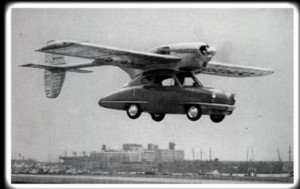The online aviation magazine Stories That Fly will officially launch on Saturday, May 2, 2009, with a daylong celebration at Kent State University’s newly renovated converged media complex. Project leader Gordon (Joe) Murray and his team are finishing work on the magazine’s Web site, which even in its prototype stage has attracted online visitors.
The attractive, interactive online magazine has succeeded in gathering content from Kent State faculty and students as well as from members of the aviation, academic and general public. Approximately 30 stories are now being produced from interviews and video footage recorded in summer 2008. The Stories That Fly team aims to have one to two months’ worth of feature stories, video, photographs and photo essays in reserve so that roughly five new features can be published every month once the site goes live, as well as an unlimited number of contributions from the public.

Murray and his colleagues have focused on making the Web site engaging and easy to use. “We are … integrating, developing and testing a targeted variety of interactive features intended to facilitate social networking, the sharing of content and contributions from participants, members of the aviation and academic communities and the general public,” he writes.
Among the Web site’s features:
- Users can subscribe to the magazine online (it’s free).
- Subscribers may comment on all stories via a reply dialogue associated with each feature story, video, slide show and regular column.
- A 10-star ranking system allows site users to “vote” on all stories and other material.
- A Flickr group permits users to upload images to the Stories That Fly site to share with others.
- Via a YouTube channel, users can upload video clips to the Web site.
- On the main page, video excerpts of features are presented in an interactive, 3-D video wall to attract and engage users and encourage them to enter the magazine site.
- A “share this” link accompanies every story, video, news item, event and slide show to allow users to e-mail content directly from the magazine.
- Users also can post magazine content directly to social networking sites such as Facebook and MySpace.
Content-wise, Murray and his team are experimenting with slide shows (photo essays) and with short- and long-form articles. The idea is to test reader interest in the various formats.
Challenges remain. “A number of technical hurdles are being overcome that are related to the preview videos that will be presented on the video wall,” Murray reports. “We are experimenting with formatting and quality settings for video and audio that will be delivered via YouTube.”
To sustain the online venture, Murray has been talking with numerous aviation-related groups, including Jeppesen Sanderson, a publisher of flight information; the Aircraft Owners and Pilots Association (AOPA); the Experimental Aircraft Association (EAA); and the Kent State University School of Aeronautics.
Murray reports that he will receive $2,500 from the University Teaching Council as well as a $3,500 fellowship from the Faculty Professional Development Center, which will be his match for Year Two funding from J-Lab. He does not now have the money to hire an ad sales representative, but he hopes to do so in the future. The Stories That Fly team has engaged Jennifer L. Kramer, manager of public relations and marketing for Kent State’s College of Communications and Information, to organize the May 2 public launch.
Funding is Murray’s primary worry. He estimates that the magazine will need approximately $25,000 to cover annual stipends and expenses. “This is not a lot of money,” he writes, “but without it the project will fail.”
To read a beautiful piece of writing, visit http://www.storiesthatfly.com/main/flyboy-seeing-is-believing.
- Hope Keller



